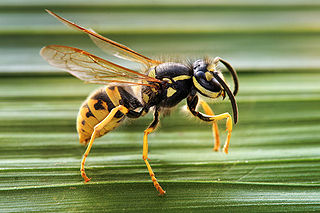
Carpentry is a skilled trade and a craft in which the primary work performed is the cutting, shaping and installation of building materials during the construction of buildings, ships, timber bridges, concrete formwork, etc. Carpenters traditionally worked with natural wood and did rougher work such as framing, but today many other materials are also used and sometimes the finer trades of cabinetmaking and furniture building are considered carpentry. In the United States, 98.5% of carpenters are male, and it was the fourth most male-dominated occupation in the country in 1999. In 2006 in the United States, there were about 1.5 million carpentry positions. Carpenters are usually the first tradesmen on a job and the last to leave. Carpenters normally framed post-and-beam buildings until the end of the 19th century; now this old-fashioned carpentry is called timber framing. Carpenters learn this trade by being employed through an apprenticeship training—normally four years—and qualify by successfully completing that country's competence test in places such as the United Kingdom, the United States, Canada, Switzerland, Australia and South Africa. It is also common that the skill can be learned by gaining work experience other than a formal training program, which may be the case in many places.

The Vespidae are a large, diverse, cosmopolitan family of wasps, including nearly all the known eusocial wasps and many solitary wasps. Each social wasp colony includes a queen and a number of female workers with varying degrees of sterility relative to the queen. In temperate social species, colonies usually last only one year, dying at the onset of winter. New queens and males (drones) are produced towards the end of the summer, and after mating, the queens hibernate over winter in cracks or other sheltered locations. The nests of most species are constructed out of mud, but polistines and vespines use plant fibers, chewed to form a sort of paper. Many species are pollen vectors contributing to the pollination of several plants, being potential or even effective pollinators, while others are notable predators of pest insect species, and a few species are invasive pests.

Carpenter bees are species in the genus Xylocopa of the subfamily Xylocopinae. The genus includes some 500 bees in 31 subgenera. The common name "carpenter bee" derives from their nesting behavior; nearly all species burrow into hard plant material such as dead wood or bamboo. The main exceptions are species in the subgenus Proxylocopa, which dig nesting tunnels in suitable soil.

Vampires is a 1998 American neo-Western action horror film directed and scored by John Carpenter and starring James Woods. It was adapted from the novel Vampire$ by John Steakley.

Frass refers loosely to the more or less solid excreta of insects, and to certain other related matter.

Carpenter ants are large ants indigenous to many forested parts of the world.

The term woodboring beetle encompasses many species and families of beetles whose larval or adult forms eat and destroy wood. In the woodworking industry, larval stages of some are sometimes referred to as woodworms. The three most species-rich families of woodboring beetles are longhorn beetles, bark beetles and weevils, and metallic flat-headed borers. Woodboring is thought to be the ancestral ecology of beetles, and bores made by beetles in fossil wood extend back to the earliest fossil record of beetles in the Early Permian (Asselian), around 295-300 million years ago.

Xylocopa violacea, the violet carpenter bee, is the common European species of carpenter bee, and one of the largest bees in Europe. It is also native to Asia.

The black carpenter ant is one of the largest and most common species of carpenter ant native to the central and eastern United States as well as eastern Canada.
Carpenter is a surname. Its use as a forename or middle name is rare. Within the United States, it ranked as the 231st-most common surname as of the 2010 census. The English meaning of carpenter is the occupation of one who makes wooden objects and structures by shaping wood.

WDIS was a radio station licensed to Norfolk, Massachusetts. It served the suburban communities south of Boston and north of Providence, Rhode Island. It had a daytime-only 1,000-watt signal that reached as far west as Worcester, Massachusetts, giving it a coverage area of almost a half-million people. As of June 13, 2014, WDIS was silent. The FCC cancelled the license and deleted the call sign for WDIS on October 13, 2015.

Daniel William Coquillett was an American entomologist who specialised in flies. He wrote a revision of the dipterous family Therevidae and many other scientific papers in which he described many new species and genera of flies. Coquillett was also the first to attempt fumigation with hydrocyanic acid as a means for controlling citrus scale insects. He experimented in the Wolfskill orange groves where he was supported by the foreman and later quarantine entomologist Alexander Craw in 1888–89.

The Insectarium was a museum about insects which was located in the northeast part of Philadelphia, Pennsylvania.

Lyctus brunneus is a xylophage (wood-eating) insect a species of beetle in the family Bostrichidae. It is a member of the subfamily Lyctinae, the powderpost beetles. It is known commonly as the brown powderpost beetle or brown lyctus beetle.

The California carpenter bee or Western carpenter bee, Xylocopa californica, is a species of carpenter bee in the order Hymenoptera, and it is native to western North America.

Harrison Gray Dyar Jr. was an American entomologist. Dyar's Law, a pattern of geometric progression in the growth of insect parts, is named after him. He was also noted for eccentric pursuits which included digging tunnels under his home. He had a complicated personal life and along with his second wife he adopted the Baháʼí Faith.

An insect hotel, also known as a bug hotel or insect house, is a manmade structure created to provide shelter for insects. They can come in a variety of shapes and sizes depending on the specific purpose or specific insect it is catered to. Most consist of several different sections that provide insects with nesting facilities – particularly during winter, offering shelter or refuge for many types of insects. Their purposes include hosting pollinators.

John Montague Trimble (1815–1867), known professionally as John M. Trimble, was an American builder and theater architect responsible for many prominent theaters in New York, such as Palmo's Opera House, as well as theaters in Buffalo, Richmond, Charleston, Cincinnati, Pittsburgh, and Albany.
The Women's Declaration International (WDI), formerly the Women's Human Rights Campaign (WHRC), is an international advocacy organisation founded in the United Kingdom. WDI has published a Declaration on Women's Sex-Based Rights, and has developed model legislation to restrict transgender rights that has been used in state legislatures in the United States.
















